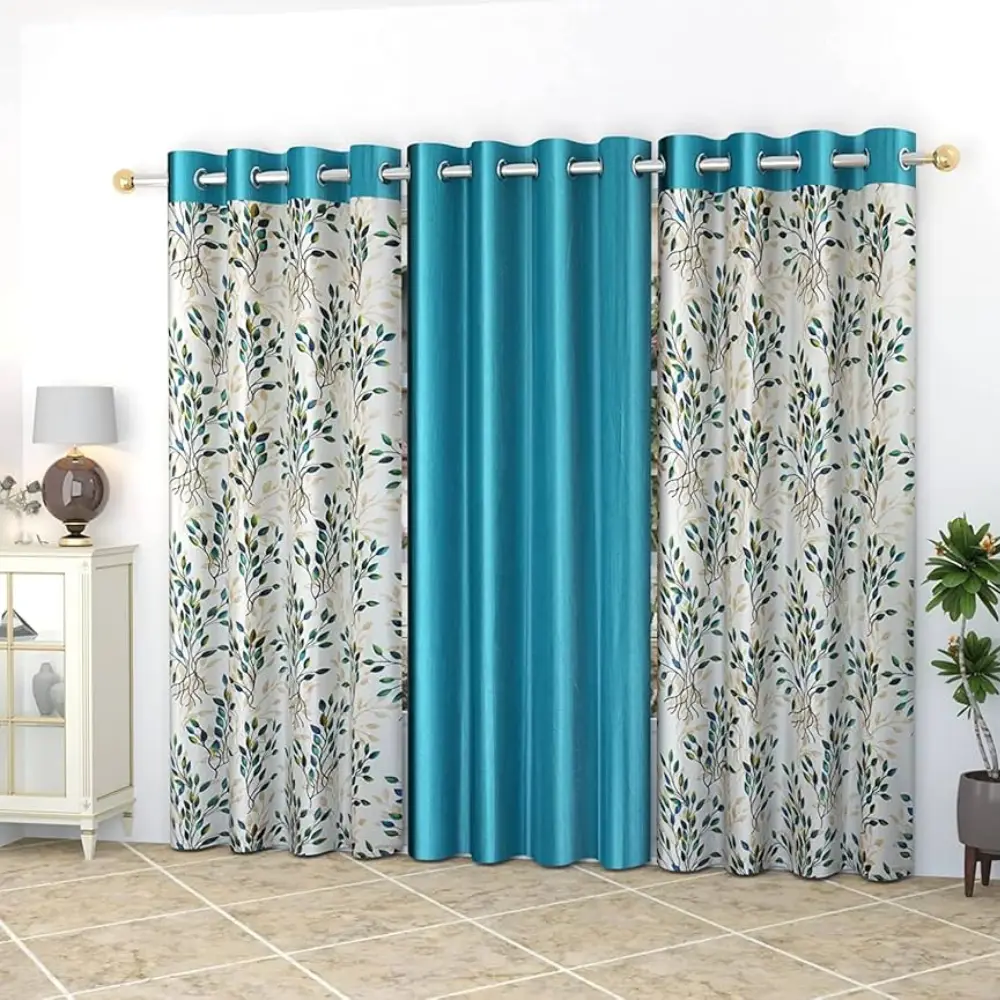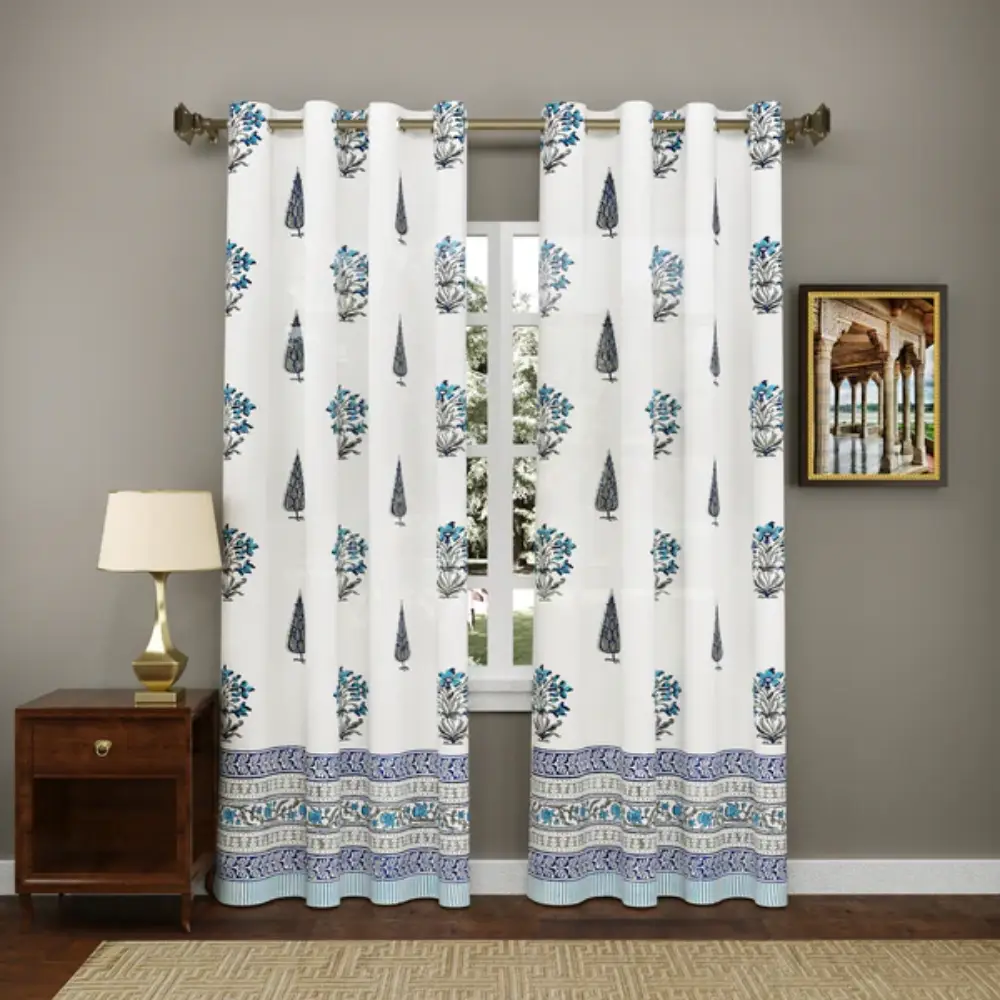How to Choose the Perfect Curtain: A Complete Guide
Curtains are an essential part of any room's décor. Not only do they enhance the aesthetics of your space, but they also serve practical functions like controlling light, ensuring privacy, and contributing to energy efficiency. But choosing the perfect curtain can be a bit overwhelming given the wide variety of styles, fabrics, and features available. To help you make the best choice for your space, here’s a comprehensive guide on how to select the perfect curtains for your home.
1. Understand the Purpose of Your Curtains
Before diving into the world of colors, patterns, and fabrics, it's important to determine the primary purpose of your curtains. Think about how you want them to function in your space:
Light Control: Do you need curtains that block out light, or would you prefer something that lets in natural light while still providing privacy? This will help you choose the right fabric and opacity.
Privacy: If privacy is your main concern, opt for thicker or lined curtains that prevent people from seeing into your space. Sheer curtains, on the other hand, allow natural light to filter in while offering minimal privacy.
Energy Efficiency: Curtains can help insulate your space and regulate the temperature. Heavy fabrics or thermal-lined curtains are great for keeping your room warm in winter and cool in summer.
Decorative Function: Curtains are often a statement piece in a room’s décor. If this is your main goal, you’ll want to focus on the style, pattern, and color of the fabric.
2. Choose the Right Fabric
The fabric of your curtains affects their functionality, appearance, and how easy they are to maintain. Here are some popular fabric options:
Cotton: A versatile fabric that’s available in a variety of patterns and colors. Cotton curtains are light, breathable, and easy to clean. They work well in casual spaces and are perfect for creating an airy, fresh look.
Linen: Linen curtains are slightly more textured and provide a relaxed, rustic vibe. They are great for rooms that get a lot of sunlight, as they allow light to filter through while still providing some coverage. However, they tend to wrinkle easily, so keep that in mind if you're looking for low-maintenance options.
Velvet: For a more luxurious and dramatic look, velvet curtains add depth, texture, and warmth to any room. Velvet is also great for soundproofing and insulation, making it a fantastic option for bedrooms or home theaters.
Silk: Silk curtains offer a rich, elegant aesthetic and have a natural sheen that can elevate any room. However, they require more care, as they can fade in direct sunlight and are generally more difficult to clean.
Polyester: Polyester curtains are affordable, durable, and easy to maintain. They resist wrinkles and fading, making them a practical choice for high-traffic areas like living rooms or kitchens. They’re also available in a wide range of styles and colors.
Sheer Fabrics: If you want to let in light while maintaining some privacy, sheer fabrics like voile or organza can be the perfect solution. These are especially great for living rooms, dining rooms, or any space where you want a soft, airy atmosphere.
3. Consider Curtain Length
The length of your curtains can significantly impact the look of your room. Here are the different options and how they can change the vibe of a space:
Sill Length: These curtains end at or just below the window sill. They are a great option for kitchens or bathrooms, where you might want something short and functional without overwhelming the space.
Apron Length: These curtains extend just below the window sill, usually stopping around 4–6 inches below. They provide a clean, tailored look and are commonly used in bedrooms and living rooms.
Floor-Length: Floor-length curtains that touch the floor create a sophisticated, elegant look and are perfect for more formal rooms. This length is a great choice for larger windows and can add height to the room.
Puddle Length: For a dramatic and luxurious effect, puddling refers to curtains that extend several inches beyond the floor, creating a soft, gathered effect. This is ideal for grand, opulent spaces, but it requires more maintenance, as the fabric can accumulate dust.
4. Choose the Right Color and Pattern
When choosing the color and pattern for your curtains, it’s important to consider your room’s existing décor and overall vibe:
Neutral Colors: Neutral tones such as white, beige, gray, or taupe are versatile and can blend seamlessly into any space. These are especially great if you have a lot of bold furniture or décor, as they provide a calming, subtle backdrop.
Bold Colors: If you want to make a statement, opt for curtains in rich colors like navy, mustard, or deep green. Bold colors can act as a focal point in the room and help liven up a neutral space.
Patterns: Patterns like stripes, florals, geometric shapes, or abstract designs can add texture and interest to a room. If your furniture is neutral, patterned curtains can help inject some personality into your space. On the other hand, if you have a lot of patterns already, solid-colored curtains will keep the room balanced.
5. Measure Your Windows Properly
Accurate measurements are key to achieving a polished, well-fitted look. Here’s how to measure your windows for curtains:
Width: Measure the width of your window and then add 4-8 inches on each side for a full, gathered look. If you want your curtains to hang neatly, avoid having them too tight.
Length: Measure from the top of your window (or from the curtain rod) down to where you want the curtain to end—either at the sill, floor, or a few inches below. Add extra length if you want your curtains to "puddle" on the floor.
6. Select the Right Curtain Style
There are various curtain styles to choose from, each offering a different look and feel:
Grommet Curtains: These curtains have metal rings at the top, which makes them easy to open and close. They offer a modern, streamlined look and work well with both light and heavy fabrics.
Rod Pocket Curtains: With a sewn-in pocket at the top, rod pocket curtains slide onto the curtain rod without any hardware visible. They’re a classic choice that works well in more traditional or cottage-style interiors.
Tab Top Curtains: These curtains have fabric loops at the top, which hang over the curtain rod. Tab top curtains offer a casual, relaxed look, making them ideal for living rooms or kitchens.
Pleated Curtains: Pleated curtains have a more formal, structured look. They can be either pinch pleats, box pleats, or accordion pleats, offering a tailored appearance. These curtains work well in dining rooms, formal living rooms, or bedrooms.
7. Consider Maintenance and Durability
Make sure to consider how much time and effort you're willing to put into cleaning and maintaining your curtains. Some fabrics, like linen and silk, require more care, including dry cleaning. If you prefer low-maintenance curtains, look for machine-washable options like cotton, polyester, or blends.
Conclusion
Choosing the perfect curtain involves a balance of style, function, and practicality. From selecting the right fabric and length to considering the color and pattern, each detail plays an important role in creating the ideal atmosphere in your home. Keep in mind the room’s needs, the level of maintenance you’re comfortable with, and how the curtains will complement the rest of your décor. With these considerations in mind, you can confidently choose the perfect curtains that will elevate your space and suit your lifestyle!













